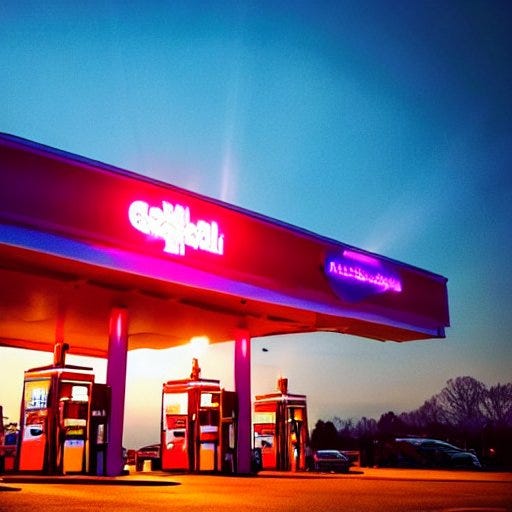
Vol. 1, No. 8 — Gasoline, diesel, natural gas, and electricity: nearly all forms of energy are more expensive in Europe than in the Midwest. Chalk some of that up to population density, but it is definitely a shock when starting to live here.
I’ve just returned from filling up our car and paid €6.98 (the equivalent of $7.25) per gallon. This is higher than a few months ago because, as the world comes out of lockdown, the demand for fuel has naturally increased. That said, even when there is a glut of oil, you will be spending $5.50 or $6.00 per gallon to fill your tank. Having a car in Europe is expensive.
Diesel is about $1.00 per gallon cheaper than gasoline here. For many years, the majority of new cars being purchased were diesel. This changed around the time of the “Dieselgate” emissions testing scandal in the Volkswagen auto group. Suddenly, these “clean” diesel cars weren’t actually testing well enough to meet certain emissions standards. In the metropolitan centers of most large cities in Europe, only low-polluting vehicles may enter. This has greatly improved the air quality but has not gone without controversy. Long story short, suddenly diesel vehicles have become less attractive.
Furnaces and air-driven heating are just not a thing over here because of the way homes and apartments are constructed. Everything is stone, brick, and concrete. I personally love the solid, distinctly “European” feel everything has because of this but would give anything to be able to quickly route a cable or hang a shelf without kickstarting a jackhammer. Residential heating systems use natural gas boilers and radiators or electric heat.
When you look at apartment listings, they will always specify the type and age of the heating system being used. The difference in value for properties heated by an older electrical system vs a modern natural gas system is quite significant.
Propane isn’t used much residentially, as far as I can tell. When I lived in Germany, companies started popping up that would convert your car to run on propane because it had become so inexpensive. If you ran the numbers, the conversion would pay for itself in about 18 months if your commute couldn’t be accomplished with public transport. While tempting, it meant you needed to drive around with a highly explosive cylinder of compressed gas in your trunk. Now, that might evoke images of Fast and Furious Nitrous Boost shenanigans, but the propane cars were notoriously gutless.
Natural gas runs about $2.40/Therm ($0.08/kWh) in Spain, reasonably in line with the rest of Europe. The price of electricity, however, is one of the highest in the world at $0.30/ kWh. Solar and wind energy are quite big in general in Europe but, again, Spain is a bit different. If I purchase a solar panel, charge controller, and battery bank to use on my property, I am supposed to pay a tax on every kWh it captures. It’s almost as if the government has close ties to the energy sector or something. Strange…
After living here for a while, the prices become normal, and other things about Europe offset these costs. We probably only fill the car a dozen times per year due to public transport. We also don’t have a clothes dryer to run up the electrical bill because, well, they’re simply not that common here.
One thing still snaps my head around here after all these years, though: the sound of a V8 engine. Whoever is driving that thing has some serious spare change.
Midwestern Europe: Volume 1 with the first 52 entries in this series is available now on Amazon US, Spain, and Germany in hardcover, paperback, and Kindle formats!
They were made with much love. Pick up a copy, you won’t be disappointed.
If you’ve been enjoying these entries, please consider dropping by the product page and leaving a star rating based on what you’ve read here. Your investment of a minute or two would totally make my day! Many thanks.

